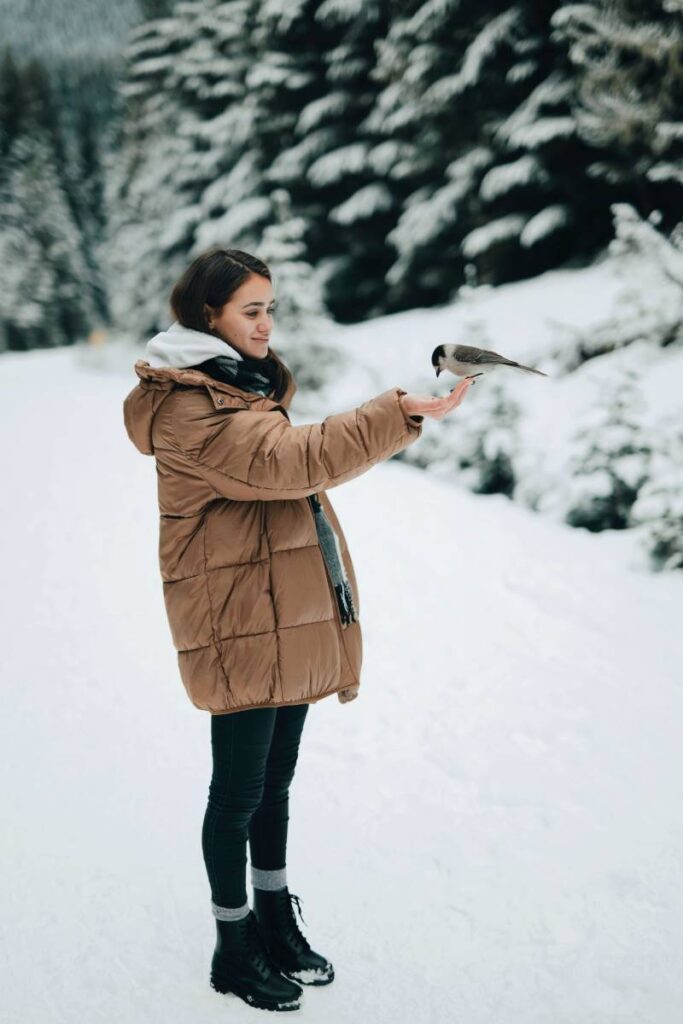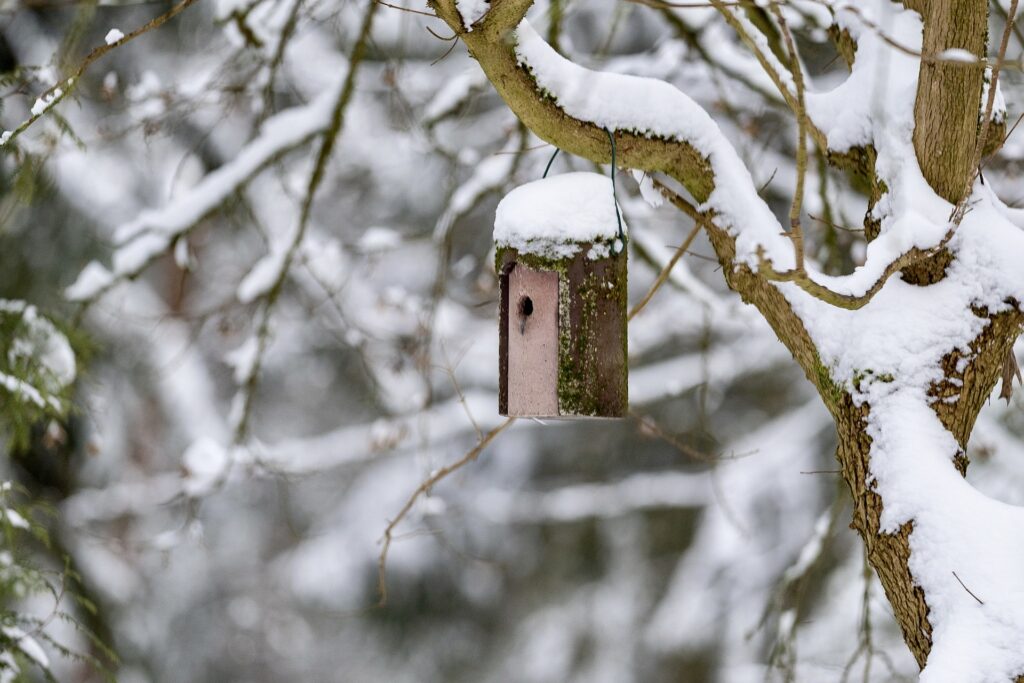While winter is a welcome season for some, it can be challenging one for others. Even those who love all of the joys of the cold season can find that their spirits dip due to shorter days, less sunshine, and the reminder of loved ones long past. Seasonal Deficit Disorder (SAD)*, a depressive condition linked to the winter months, affects an estimated 10 million Americans. If you include yourself in this number, you’re not alone. And you might just find some comfort in the unlikeliest of places: wild birds.

What do birds have to do with seasonal sadness? Well, for one, birds are struggling too. In 2019, the journal Science dropped a bomb with their revelation of an unprecedented 3-billion bird population loss in North America since 1970. And the 2022 U.S. State of the Birds Report, conducted by Bird Life International, revealed some more disturbing news: more than half of U.S. bird species are declining, with more than one in eight at risk for extinction.
These statistics are daunting, to be sure. But as the American Bird Conservancy writes, there are many “small but powerful actions” we can take every day to help with bird conservation. And doing might also help us cope with the winter blues.
Helping Birds Survive Winter

Here at Big Bear Lake, our winters are typically snowy and cold. Now imagine being a bird looking for food and shelter in that climate. The bushes where you normally forage for berries are bare, or buried under snow. The insects you gorge on in spring and summer are nowhere to be found. You’re cold, you’re hungry, and you need to store up energy to prepare for a long migration. What do you do? And as nature enthusiasts and wild bird advocates, what can we do?
Help birds find supplemental food and water sources

We can help birds by supplementing their natural food sources during the winter, when those sources are scarce. Hanging bird feeders in our yard—especially when filled with high-quality bird food with a high fat and protein content—makes a big difference. Place feeders under your eaves, or choose those with a roof or weather-resistant design, to shelter feeding birds from the elements. And adding a heated birdbath that prevents the water from freezing ensures that birds have drinking and bathing water.
Help birds find shelter from the cold

Wind, rain, snow—birds need respite from all of it. Offer them shelter by mounting a bird house or roosting box on your property. If you don’t want to go that route, consider stacking some sticks in your yard for birds to hunker under. Fallen branches, twigs—even your old Christmas tree can be used as a makeshift storm shelter your local birds will appreciate.
More winter wild bird resources:
- The Importance of Winter Wild Bird Feeding
- More Winter Bird Feeding Tips
- Do Birds Need Water in Winter?
How Birds Can Help Us in Winter
In this community of bird lovers, we’re already aware that wild birds bring a measurable sense of joy to our lives. Watching the birds and listening to their bird song has proven mental health benefits.* One study revealed that a person’s wellbeing was improved for eight hours simply from seeing and hearing birds. Another study found that people living in places with more natural elements, like “birds, shrubs, and trees,” reporting experiencing lower levels of stress, depression, and anxiety. These findings make sense, since birdwatching is shown to reduce adrenaline and cortisol levels—hormones linked to stress and anxiety. Here’s how you can unlock the mood-boosting power of birds:
Feed the birds in your backyard

The Mayo Clinic recommends getting outside for a couple hours each day to combat SAD symptoms. In doing so, you expose yourself to outdoor light, which, even on cloudy days, can do wonders to lift your spirits. Sitting out on a covered patio—or even inside at a light-filled window—to watch the birds at your feeders is an easy way to get a boost of vitamin D, and a dopamine hit from seeing all of the different types of birds visit your feeders. And, you gain a sense of accomplishment from feeding the birds when they need it the most.
Keep track of the birds you see

Turn off the TV, put down your smartphone, and step outside with a journal and field guide. Take notes on the birds you see in your yard and neighborhood. Note their colors and markings, where you spot them, and any other details. Even if you don’t consider yourself a skilled drawer, make a rough sketch of the bird for later reference. And, if you don’t want to stay off your phone, use it to help identify birds by their calls (we recommend the Merlin Bird ID app for this).
Embark on a birding walk with likeminded bird lovers

Exercise is very effective in easing SAD symptoms. Add some socialization and a nature-focused task, and you have a recipe for a better state of mind. Birdwatching, or birding, is an easy way to get all three in combination. Invite a friend or two for a birding adventure walk at your local nature preserve or beach. Or find a local birding group to join. If you live in the Big Bear Lake area, Chirp hosts monthly guided bird walks for people of all ages—come and join us!
Are You a Beginner Birder?
Thinking about birding as a winter diversion? If you’re new to birdwatching, welcome! Chirp has lots of free resources to get you started:
- How to Birdwatch: 3 Steps to Get Started
- Beginner’s Guide to Backyard Bird Feeding
- The Ultimate Guide to Hummingbird Feeding
- 5 Common Bird Feeding Mistakes and How to Fix Them
- Eating Like a Bird: What They Crave and Other Fun Feeding Facts
- Chirp’s Video Series: How to Begin Backyard Birding
*While birdwatching and related activities can help to alleviate SAD symptoms, you may also wish to seek professional medical help if you experience these symptoms—especially if they persist or worsen.


